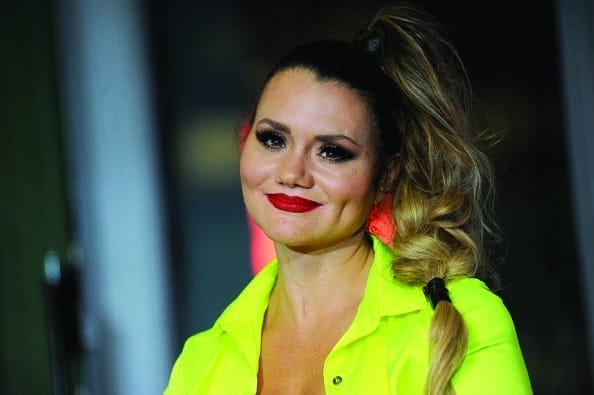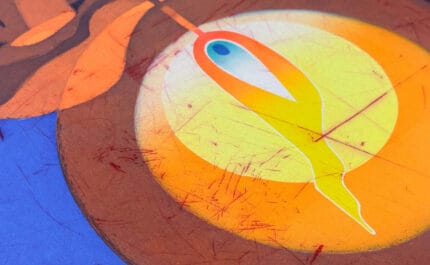The last of the Flying Wallendas
March 2021 saw the death of high-wire walker Carla Wallenda, the last living child of Flying Wallendas founder Karl. After almost a century of spectacular stunts – and several grisly accidents – the greatest of daredevil dynasties is still on the road. Fourth-generation wire-walker Lijana Wallenda explains why her family just can't keep its feet on the ground

A five-year-old Carla Wallenda walks across a high-wire while her parents Karl and Helen look on, July 1941
6th March 2021 (Taken from: #42)
“I remember every moment of my fall,” says Lijana Wallenda, one of the fourth generation of the Wallenda family to perform on a high wire – and, in 2017, the latest member to suffer a horrific accident. “I can see the ground getting closer, closer, closer to my face before I hit it. All I could think about was my sons, nephew and niece… I’m not letting them do high-wire walking for a living. No, the generations of wire-walking end here.”
The Wallendas’ long line of aerialists started with Karl. Born in Germany in 1905, he began learning stunts as a young child, and was performing by the age of six. In 1922 he formed the Flying Wallendas high-wire act with his brother Herman, schoolfriend Joseph Geiger and Helen Kreis, who would later become his wife.
The Flying Wallendas spent several years touring Europe before moving to Sarasota, Florida, in 1928 – largely because it was the home of the famous Ringling Bros circus which they hoped to join. The act was very much a family affair, with Karl’s daughters Jenny and Carla soon joining the troupe. Carla made her debut on the wire in 1936, at six weeks old. She was carried by her mother, who was sitting on the shoulders of Karl, who was riding a bicycle. Carla graduated to the high wire at the age of 15, where she would perform alongside her parents, sister, uncle and cousins.
The troupe had two signature moves: performing without a safety net, and the seven-person chair pyramid, which saw three tiers of performers crossing the wire together. While Karl liked to say that nets were for women’s hair, the act’s perilous speciality arose from an administrative error. When they debuted at New York’s Madison Square Garden in 1928, as part of the Ringling Bros circus, their safety net was lost in transit. But the show went on – earning them a 15-minute standing ovation and a calling card that, combined with the pyramid Karl later developed, would prove fatal.
“The seven-person pyramid is pretty impressive,” says Lijana. “It’s four people on the bottom, then two people standing on bars attached between the four bottom guys, with one person on the top. My role was to be at the top, following in my mother and my grandmother’s footsteps. It’s a spectacular thing.”
Spectacular, but also spectacularly dangerous. In 1962, the Wallendas’ seven-person pyramid collapsed in front of a full house at the Shrine Circus in Detroit’s State Fair Coliseum. Karl’s oldest daughter, Jenny, had taken a night off performing, and had a front-row seat as her husband Richard Faughnan and cousin Dieter Schepp fell to their deaths, and her adopted brother Mario was paralysed from the waist down. Having fallen three storeys onto concrete with the rest of his troupe, Karl cracked his pelvis, only to sneak out of hospital and hobble along the high wire again the following night.
“As a child, I remember thinking, ‘My family is crazy,’” says Lijana. “I just couldn’t understand this ‘the show must go on’ mentality”. But the show did go on, even as tragedy continued to strike. Karl’s sister-in-law, Henrietta, died in a fall a year after the Detroit collapse, and Carla’s husband Chico Guzman was killed in 1972; electrocuted when his balancing pole touched a live wire during a performance in West Virginia.
As a child, I remember thinking, ‘My family is crazy”
Karl refused to slow down as he got older. He was 65 when he did a high-wire walk across Georgia’s Tallulah Gorge in 1970, doing two handstands on the wire suspended 750 feet above the ground – one in honour of American troops in Vietnam, the other just for laughs. When he reached the end of the 1,000ft gap, his wife Helen handed him a martini.
Eight years later, ticket sales were slow for a show in Puerto Rico. So Karl – 73, arthritic and recovering from heart surgery – decided to drum up publicity by walking between the two ten-storey towers of San Juan’s Condado Plaza Hotel. With high winds forecast for the day of the walk, Karl’s family begged him to postpone. But on 22nd March 1978, at 11am prompt, he stepped onto the wire. Halfway across, his foot slipped, and despite grabbing the wire he didn’t have the strength to hold on. The cameras didn’t pull away until he hit the ground, 121 feet below. “I have seen the video of my great -grandfather falling to his death several times,” says Lijana. “They always play it whenever any of the family appears on a TV spot.”
But Karl’s motto – “To be on the wire is life; the rest is waiting” – endured. Carla continued to perform into her eighties. “I have to make a living and this is the only way I know [how] or want to,” she told the Sarasota Herald-Tribune in 2014. She appeared in the video to Miley Cyrus’ 2017 single ‘Younger Now’, and the same year announced her retirement at the age of 81 by doing a headstand on an 85ft pole on the Forever Young TV variety show. She died of natural causes in Sarasota on 6th March this year.

Lijana Wallenda
Lijana and her brother Nik are still very much part of the same family business as their great aunt Carla, having been performing for most of the past two decades. “We’re not crazy,” insists Lijana, whose mother and father also performed as aerialists.
In 2011, to conquer the demons of the past, Nik and his mother Delilah completed the same Condado Plaza Hotel walk that had claimed Karl’s life. In 2017, Nik and Lijana attempted to up the ante on the family’s famous pyramid scheme, adding an extra person and an extra layer. If they had been successful, they would have set a new Guinness World Record. But, during rehearsals, things once again went awry. “I remember, seconds before we fell, saying ‘Guys, this feels great,’” recalls Lijana. “Then it just happened. We’re trained to catch the wire before falling. The wire was within reach, but I just couldn’t grab it.”
Lijana, along with four others including her cousin, fell 40 feet. She suffered the worst injuries, breaking every bone in her face and shattering several others in her body. “I remember my brother being at my side almost instantly,” she says. “He caught the wire and then came down in seconds. I kept trying to get up to see how everyone else was, but my brother kept holding me down going, ‘Lay down, lay still.’”
Lijana heeded her brother’s advice, but not for long. It took three plates and 72 screws to surgically repair her face, but she soon started feeling the compulsion to perform again. “It’s so crazy, because I nearly lost my life, but I totally get why my great-grandfather checked out of that hospital in 1962 and performed the next night,” she says. “Even when I had a tracheostomy tube in and a feeding tube in and my jaw wired shut, there was never a time when I considered giving up wire-walking. If you get in a car accident, are you never going to drive again? Things happen. But you can’t let it define the rest of your life.”
Just two years later, Lijana started making plans for a very public comeback – a 1,300-foot wire-walk over Times Square in New York City. Her brother would start from the other side and the siblings would cross in the middle. “Nik called me and asked me if I wanted to do it, and I’m like, ‘Yeah, of course. That’s what we do,’” remembers Lijana. “I was excited, but I hadn’t done any high-wire walking since the accident. To train, I crossed a 15-foot-high wire – not high by our standards, but this fear grabbed me. I couldn’t do it. I kept seeing the accident and I was rigid.” This went on for six weeks and Lijana wondered if she would be able to wire-walk again.
“Eventually, I remembered how I love the way the balancing pole feels in my hands, and how much I love the way the wire feels sliding across my feet,” she says. Finally she made it across the wire and promptly burst into tears. “One of our riggers was up there and he said, ‘What’s wrong?’ And I just blurted out, ‘I forgot who I was’,” she says. “People go through a divorce, or they lose a job, or whatever trauma it might be, and it becomes so easy to forget who you are. It’s easy to not live to your full potential, to live smaller – but what a tragedy it would’ve been if we just gave in to that fear and didn’t keep pushing through. If I had given in to my fear, I wouldn’t be living out my dreams.”
If I had given in to my fear, I wouldn’t be living out my dreams”
On 25th June 2019, Lijana stepped off a 363-foot skyscraper and walked across a wire to another building on the other side of Times Square. “The first step was scary,” she recalls. “Actually, the first few steps were scary, but as I went on and on it became more and more enjoyable, and then I didn’t want it to end.”
Yet again a Wallenda was on the wire, and – despite Lijana’s mid-air resolution back in 2017 – she may not be the last generation after all. “The bug kind of bit my son when he saw us at Times Square,” she admits, almost sheepishly. “At the beginning of the pandemic, we would go out on my low wire every day and practice, and he became a really good little wire-walker. We’ll see if he decides he wants to carry that on or not, but how can I stop him? His mother does it, his grandmother did it, his great aunt, his great grandmother, his great-great-grandfather. How could I tell him he can’t? It’s just in us”.
Slow Journalism in your inbox, plus infographics, offers and more: sign up for the free DG newsletter. Sign me up
Thanks for signing up.








